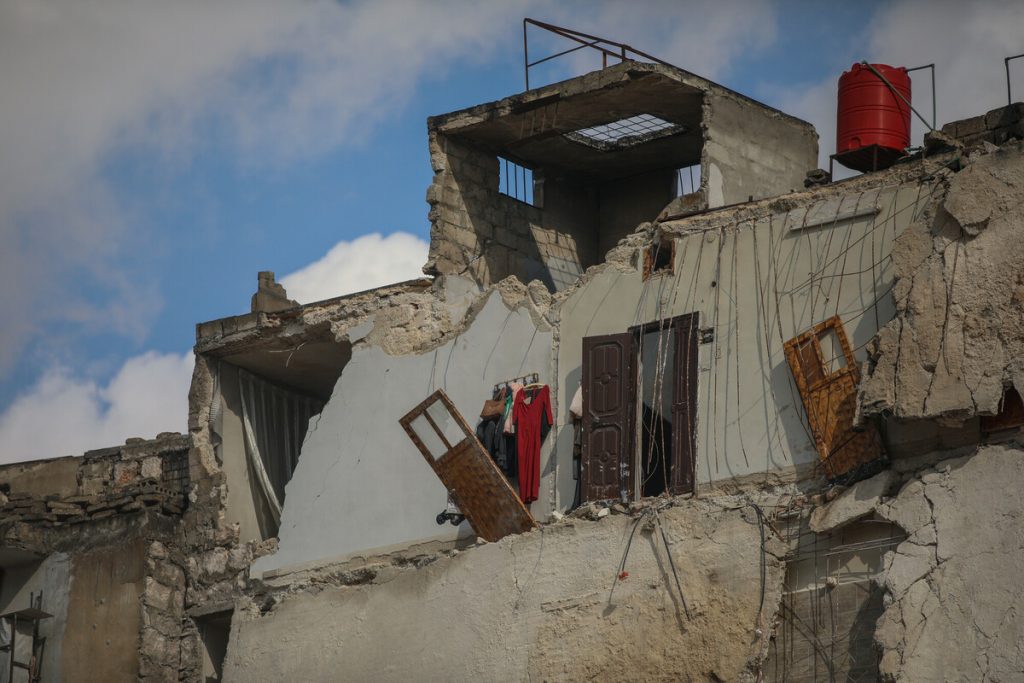Cash-For-Work: A Temporary Lifeline at Za’atari Refugee Camp
A decent job –even if temporary– makes a difference for refugees in Jordan.
The Za'atari refugee camp is the world's largest camp for Syrian refugees. Established in July 2012 as Syrians fled across the border into Jordan, this year marked its tenth anniversary. More than half of its 82,000 inhabitants are children.
Located 80 kilometres northeast of Amman, Jordan's capital, the camp is in an arid, desert-like area with extreme weather conditions. Mobile homes, known as tin caravans, can barely hold against the frequent dust storms.
Oxfam is one of the largest providers of income opportunities in Za'atari. It runs a recycling plant and also manages the camp's waste collection.
Refugees work in both initiatives as supervisors, sorters or collectors of waste. Oxfam also employs engagement officers who act as a link between these projects and the camp's communities.
Oxfam currently provides around 850 temporary work placements. Over 10,000 people have benefitted from these opportunities in the past two years.
Refugees have contributed to the camp's sanitation and hygiene through this work. Notably, they have diverted around four million kilograms of trash from Jordan's landfills.
Cash-for-work contracts range from one month to one year to ensure a large number of people can benefit. However, many struggle to make ends meet between employment periods. More than 70 per cent of people living in the camp are in debt.
Why Cash-for-Work Programs Matter
Majd, a single mother of a seven-year-old girl, manages a team at Oxfam's recycling centre in Za'atari. Her income also supports her elderly parents and siblings.
She has been able to save up some money but would like to have the opportunity to do more to offer her daughter a better future.
Work isn't just a way to meet basic needs. It's also a source of pride. However, there are few employment options for those waiting for their turn to work at the recycling centre.
After the COVID-19 pandemic hit, jobs outside the camp, like in nearby farms, dropped significantly. New regulations made it more expensive for refugees to secure work permits.
In 2017, more than 7,000 permits were granted to refugees, but in 2022, only 176 permits have been renewed.
This is why cash-for-work programs by Oxfam and other agencies are so valuable to refugees. According to a 2019 Oxfam survey, 86 per cent of participants felt these schemes provide a safe environment and give women equal access. Refugees who participated in cash-for-work initiatives showed significant improvement in self-esteem compared to those who didn't.
Dwindling Resources and an Uncertain Future
Nickie Monga, country director for Oxfam in Jordan, says cash-for-work programs have provided much-needed opportunities for refugees to earn an income. More than 60 per cent of refugees in Jordan live below the international poverty line, surviving on less than $5.50 a day.
"Jordan has a unique history of welcoming refugees and has been a generous host to more than one million Syrians," says Monga. "The international community has a responsibility to keep supporting the refugee response in Jordan to share this burden and ensure humanitarian agencies can ensure vulnerable families receive the support they need."
While cash-for-work programs provide temporary lifelines to refugees, they face shrinking funding.
Amid competing global crises, humanitarian funding for Syrian refugees in Jordan is in decline. As of July 2022, the Jordan Response Plan for the Syria Crisis lacks 90 per cent of the needed funds.
Long-term sustainable solutions are desperately needed.
"Half of the refugees in Za'atari camp are children," Monga notes. "Ten years into the crisis, it's more urgent than ever to find solutions to secure their futures."
Majd holds the highest cash-for-work position Oxfam offers. She's determined to provide a promising future for her daughter. But after ten years in the camp, she says she still doesn't feel stable.
"I don't feel that I have job security. I never know when I'll be let go. I need work but feel deprived of opportunities because I'm in the camp," she explains. "I feel stuck."
Za'atari by the Numbers
- The Za'atari refugee camp was established on July 29, 2012.
- The camp is divided into 12 districts and has 32 schools, eight health facilities and 58 community centres.
- Za'atari has a young population: 55 per cent of its 82,000 inhabitants are children.
- More than half of the families in the camp have a relative with a disability.
- Forty-two per cent of families have at least one relative with a chronic illness.
- Around a third of the people living in Za'atari have reduced their number of meals, and more than two-thirds have had to buy food on credit.

